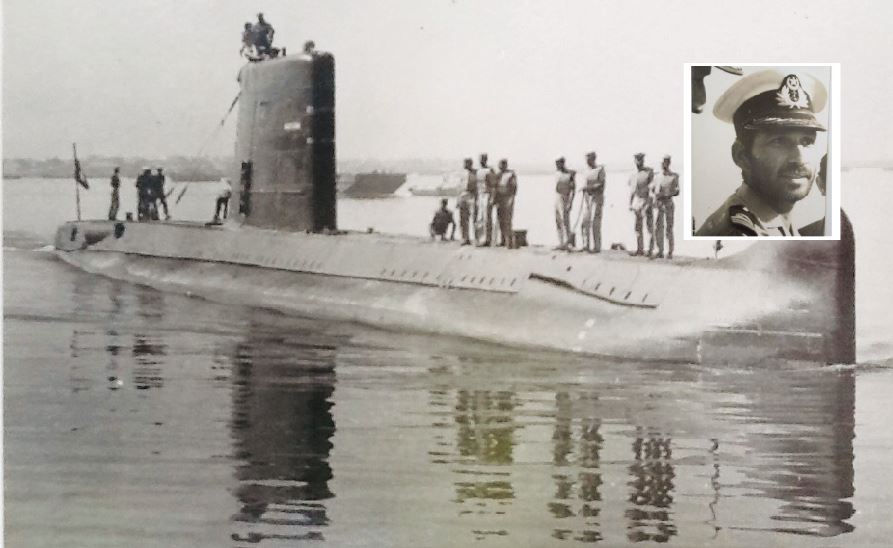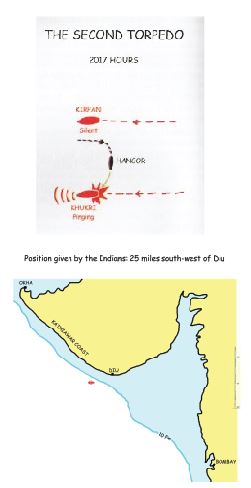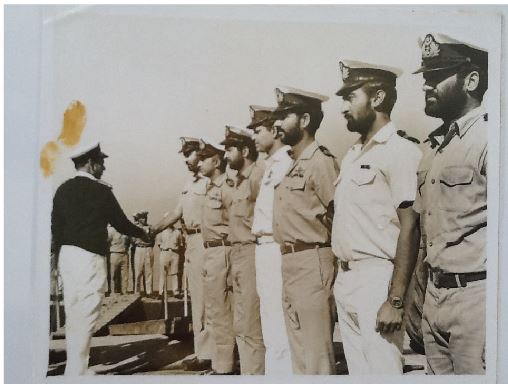The Mercurial Tasnim: The Naval Hero and Captain of PNS Hangor Who Sank INS Khukri
This gripping account details the pivotal role of Vice Admiral Ahmad Tasnim as Captain of PNS Hangor during the 1971 War, showcasing strategic brilliance, calculated risks, and the unforgettable sinking of the Indian anti-submarine ship Khukri.

 There have been great naval leaders, but they are often not given their due share because in the navy, it is not an individual but the entire crew that receives the reward. Such is the dilemma, but credit must be given to those captains of war where it is due. One such great captain is Vice Admiral Ahmad Tasnim. He is the only naval officer from the Pakistan Navy to have been awarded the Bar to Sitara-e-Jurat (Star of Courage), in addition to another gallantry award, Sitara-e-Basalat.
There have been great naval leaders, but they are often not given their due share because in the navy, it is not an individual but the entire crew that receives the reward. Such is the dilemma, but credit must be given to those captains of war where it is due. One such great captain is Vice Admiral Ahmad Tasnim. He is the only naval officer from the Pakistan Navy to have been awarded the Bar to Sitara-e-Jurat (Star of Courage), in addition to another gallantry award, Sitara-e-Basalat.I had the honor of meeting him at his residence to hear the story of his magnificent experiences directly from the man himself, which I have tried to convey in this discourse.
Early Life and Ancestry
Ahmad Tasnim's roots trace back to Iran, with his birth taking place in 1935 in East Punjab, a region that is now a part of India. His father, a member of the medical service, received an assignment in the mid-thirties at the Trimu Headworks in Jhang, where construction was in progress. Upon the completion of this project, the family moved to Jhang, providing the backdrop for Tasnim's upbringing. Subsequently, they settled in Burewala, establishing it as their permanent residence.
Tasnim commenced his educational journey at Islamia High School in Jhang, where he completed his matriculation before advancing to Government College Jhang. His pursuit of higher education led him to the prestigious British Naval Academy at Dartmouth in 1954. Graduating as a midshipman, he further honed his skills at HMS Triumph, solidifying his foundation in naval training.
As a midshipman, Tasnim's exemplary performance led to his selection for advanced sea training with the Royal Australian Navy under an exchange program. His dedication and skills earned him a promotion to Sub-Lieutenant on January 1, 1957, while serving aboard the HMAS Melbourne, a distinguished aircraft carrier. Following this enriching experience, he ventured back to England to attend the esteemed Naval War College at Greenwich.
Upon completing his education at the Naval War College, Tasnim was promoted to Lieutenant and assigned to PNS Jahangir as the Torpedo Anti-Submarine Officer (TAS), contributing his expertise until 1961. Subsequently, he briefly served in East Pakistan (now Bangladesh), although his tenure was curtailed due to his selection as the ADC (Aide-de-Camp) to the President, the eminent Field Marshal Ayub Khan.
During the induction of the first submarine, Ghazi, into the Pakistan Navy, Tasnim expressed a fervent desire to rejoin the navy to be part of the submarine crew. Despite apprehensions about Field Marshal Ayub Khan's response, he was pleasantly surprised when not only was he granted permission but also received commendations and well-wishes from the late President. Tasnim cherishes the memories of his tenure with the President, recalling it as a joyful and fulfilling period.
Lieutenant Tasnim, accompanied by Lieutenant Commander K. R. Niazi (CO designate) and other officers, embarked on a journey to Connecticut, USA, where they underwent rigorous training at the US Submarine School. Tasnim completed his sea training aboard the USS Angler, an experience that prepared him for the eventual return of the Submarine Ghazi to Pakistan in 1964.
Indo-Pakistan War 1965
During the war, Lieutenant Tasnim served as the Executive Officer aboard PNS Ghazi, operating under the command of Commander K. R. Niazi. This was part of a task force led by Commodore S. M. Anwar, assigned the critical mission of attacking the Indian radar facility at Dwarka. This strategic move compelled the Indian Fleet to leave their harbors, creating an opportune moment for Ghazi, under Commander Niazi's leadership, to launch an attack and successfully damage two Indian Navy ships.
The Indians, possibly gathering intelligence from French sources, anticipated our operating depth at around 60 meters. They conducted a predictable rectangular search pattern above, unaware that we had insight into their tactics.

In 1967, Lieutenant Commander Tasnim assumed command of Ghazi and advocated for its refitting in Turkey due to the U.S. embargo. Tasked with this responsibility, he orchestrated the noteworthy circumnavigation of Africa and Southern Europe to facilitate Ghazi's midlife upgrade at the Golcuk Naval Shipyard in Turkey, necessitated by the closure of the Suez Canal due to the Six-Day War.
During the refitting process, Tasnim entrusted Ghazi to his second-in-command and traveled to France for the procurement of Daphne-class submarines. After completing the requisite training, he assumed command of the newly constructed submarine, Hangor, at Brest, France, on December 1, 1969. This endeavor also afforded him the opportunity to learn the French language. Taking charge of Hangor, Tasnim sailed back to Karachi in early 1970 alongside the sister ship, Shushak, once again traversing the Cape Route.
Indo-Pakistan War 1971
The escalating tensions in East Pakistan forewarned of imminent conflict in the western theater. During this pivotal period of conflict, PNS Hangor, under the command of Commander Tasnim, was strategically deployed to Indian waters prior to the outbreak of war.
To glean insights into Hangor's mission, I engaged in a pivotal discussion with the Admiral, aiming to gather crucial information about the operation. In his candid and forthright manner, he graciously shared his perspective:
"At the end of November, while stationed in the designated enemy area, our submarine encountered an underwater defect that necessitated repair. Driven by our professional pride, my crew and I made a bold decision: instead of returning to Karachi, we risked addressing the issue by listing (tilting) the submarine, while camouflaging it as a fishing boat within enemy waters. Amidst this process, an Indian warship approached within a mere 1000 yards, but our ruse successfully deceived them.
On December 5th and 6th, 1971, Indian ships refrained from venturing into international waters, hugging the coast instead. In times of peace, conventional strategies dominate literature, yet it's often the unconventional that yields success. Sending a coded message to Naval Headquarters, I requested a northward move toward the Gujarat Coast, anticipating its inevitability. Promptly, Naval Headquarters granted approval without hesitation.
Working in seamless coordination with Captain Submarines (Niazi), our actions were supported by the unwavering trust of Naval Headquarters, devoid of any inquiries. This clearance was imperative due to a lesson learned from the Second World War when a British submarine was inadvertently hit by their own, marking the war's first casualty.
Navigating toward the Gujarat Coast, I knowingly breached the doctrine advising against operating the Daphne Class submarine in depths shallower than 100 meters. It was a calculated risk, maneuvering close to 60 meters below the surface, where the Indian Ships Khukri and Kirpan were operating.
The Indian forces, likely gathering intelligence from various sources, expected our operational depth to be around 100 meters. Consequently, they conducted a predictable rectangular search pattern within the 60-meter depth. I shadowed their movements, mimicking their pattern below, exploiting their oversight in assuming common operational knowledge.
Watching their maneuvers for a span of two hours, it became apparent that the Indian vessels were ensnared in their repetitive rectangular search pattern. Sensing an opportunity, I cautiously ascended to a depth of 60 meters, employing a sonar approach while vigilantly monitoring two unsuspecting ships, Kirpan and Khukri, oblivious to my presence.
When the Indian vessels approached, I positioned myself at 50 meters within the total depth of 60 meters. It was a calculated risk to attack the first Indian ship, Kirpan. I knew the consequences of failure could be fatal, but in times of war, deviations from routine are imperative. Just like the Italian Mafia Don who emphasized ten points for his team to follow but added the 11th factor of ‘unpredictability’—keeping the adversaries from reading your mind. Similarly, in warfare, one must remain unpredictable. Our training echoed the importance of surprise; hence I aimed to astonish the Indians. Faced with two Indian warships, I directed my focus towards the first ship, Kirpan, situated on my port side. Using radar, I established a range of 4000 yards, launching a torpedo towards the target. Unfortunately, the torpedo passed beneath Kirpan without detonating, leaving me deeply disappointed and confronted with a dilemma.

The Indian ship maneuvered to my starboard side, allowing me to position myself strategically to execute a shot from behind. After the turn, it took several minutes for the gyros to stabilize before we could take the shot. Once my submarine had steadied, I reduced the speed further and initiated the shot. It took almost a minute and a half for the torpedo to reach its target—the ship's magazine situated at its rear, laden with 60 tons of explosives. The impact caused a massive explosion, lifting the entire ship with a deafening blast that broke its back, leading to its swift sinking. A vessel weighing 2000 tons sank within a staggering 120 seconds.
Within a minute, the captain of the Khukri issued the orders to "abandon ship," adhering to naval traditions. Resolutely, he remained onboard as the ship descended into the depths.
Post-mission, my return to Karachi was anticipated by the Indians who calculated my Mean Line of Advance speed at 5 to 7 knots. The calm sea prevented me from surfacing, as it would have exposed us to detection. Employing the Russian Doctrine, the Indians attempted to locate the submarine by dropping depth charges along the Mean Line of Advance. Over three days, they released a staggering 156 depth charges, posing a significant challenge to our morale. The ordeal intensified as the depth charges gradually closed in on us, causing tremors within the submarine.
Anticipating their predictions about my return route, I opted for a change in strategy akin to a thief aiming for a robbery and then hiding in an unexpected place. Instead of heading towards Karachi, I steered towards Bombay, a direction least expected by the Indian forces. Amidst skepticism from some of my crew, likening my decisions to madness, we spent a day and a half approaching Bombay while the Indian ships moved farther away, believing my course had been diverted.
Once convinced of our covertness and the Indians' lack of anticipation, we charted our course towards Muscat and subsequently to Karachi.
Our success in destroying an Indian ship with a submarine marked the first submarine kill since World War II, a historic event unmatched until the Falklands War in the 1980s when a Royal Navy Conqueror sank the Argentine cruiser General Belgrano.
His Arrival at Karachi
Upon their arrival in Karachi, the crew of Hangor was warmly welcomed as heroes. Alongside the reception by Vice Admiral Muzaffar Hassan, Naval Chief (01-09-1969 to 22-12-1971), Commander Submarines, and other senior officers, the family of Vice Admiral Tasnim was also present to extend their heartfelt greetings and support, embracing the returning crew with pride and admiration for their remarkable achievement.
In 1972, Commander Ahmad Tasnim was again decorated with Sitara-e-Jurat for his actions of valor in 1971 War.
The writer is a military historian and biographer.
E-mail: [email protected]


